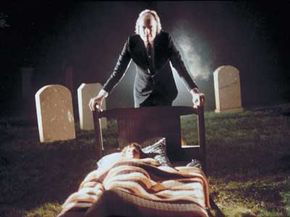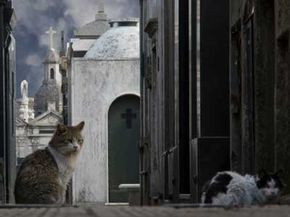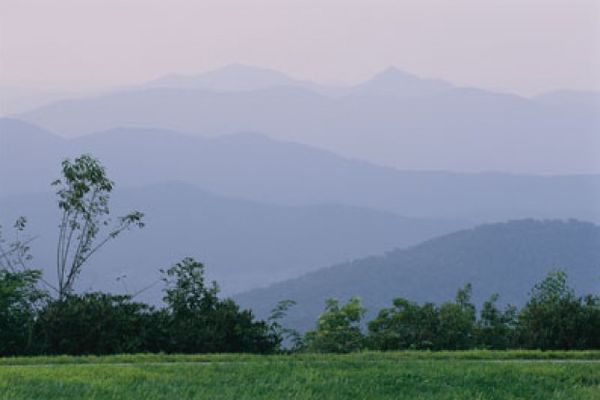Under the watchful gaze of crumbling saints and baby-faced cherubs, you hurry down a path lined with mausoleums. Eventually, you pass crops of headstones glinting in the moonlight, each engraved with the CliffsNotes version of the dead person's life. You practically run past sunken graves and dying flowers, hoping upon hope that the sound you hear is just the wind and trying to shake the feeling that something is following close on your heels.
All right, so maybe you've never taken a midnight shortcut through the local cemetery. But if you have ever set foot in a graveyard, you've likely felt a hint of the fear and uneasiness that is their legacy. Maybe you were attending a family funeral, touring historic graveyards or simply fleeing flying silver spheres and hooded dwarves.
Advertisement
Whatever your reason for strolling among the tombstones, you probably felt something noteworthy about the experience -- something different from all the other spaces and places that fill our lives. After all, graveyards are the final resting place for many of our dead. People say their last goodbyes there, sometimes returning year after year to leave flowers or say a few words.
No matter where you travel in the world, cemeteries frequently are silent and solemn settings. Whether the grounds are finely manicured or left to the weeds, graveyards exist as the place where the living contemplate the mysteries, traumas and heartbreaks associated with death.
But why are so many people afraid of graveyards? Is it the thought of all those decaying bodies under the dirt or the idea of a bony arm emerging from the soil to grab your ankle and pull you into the underworld ? Or is it something deeper? On the next page, we'll travel to a place full of dark secrets and hidden skeletons: the human brain.
Advertisement




